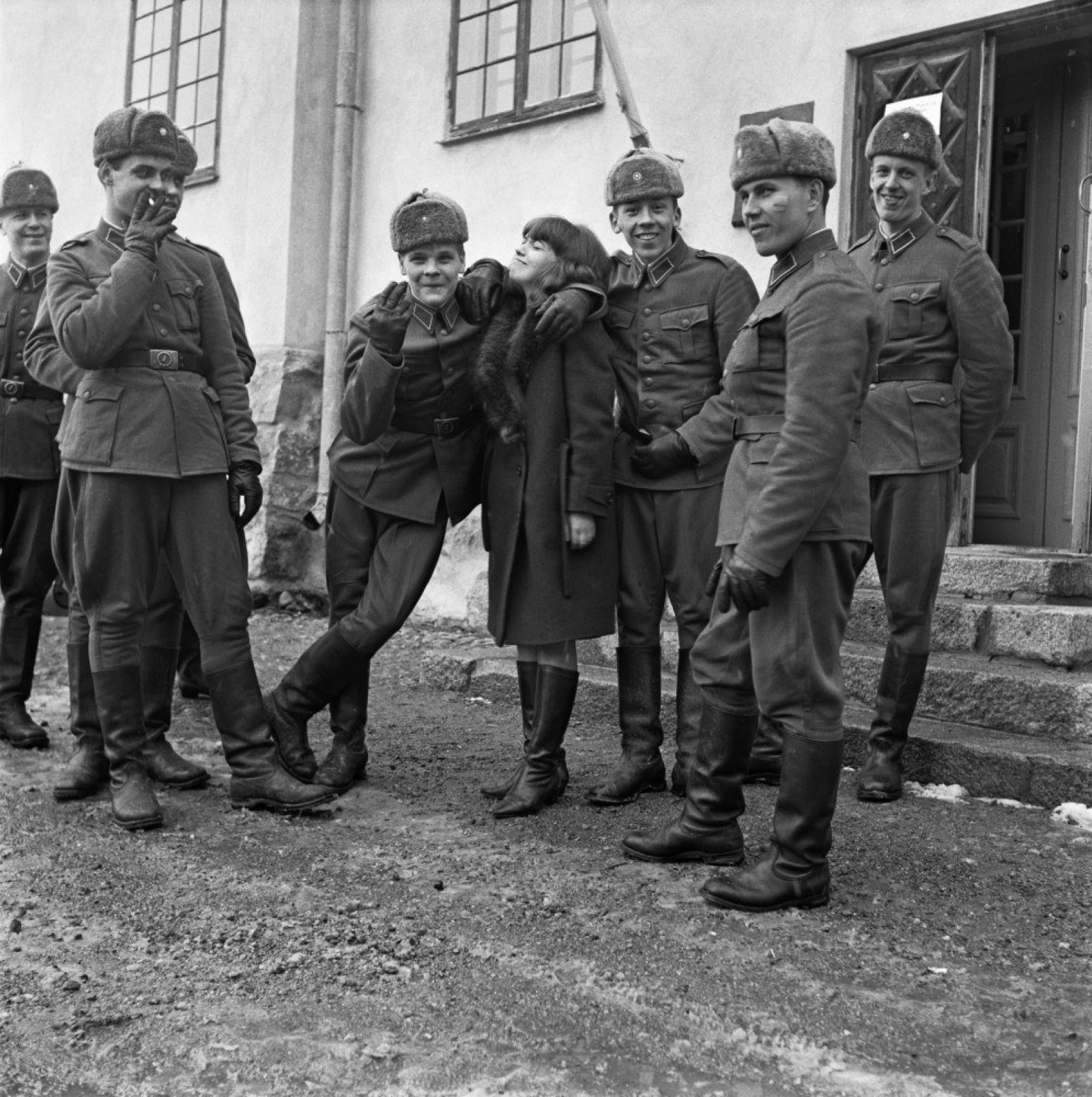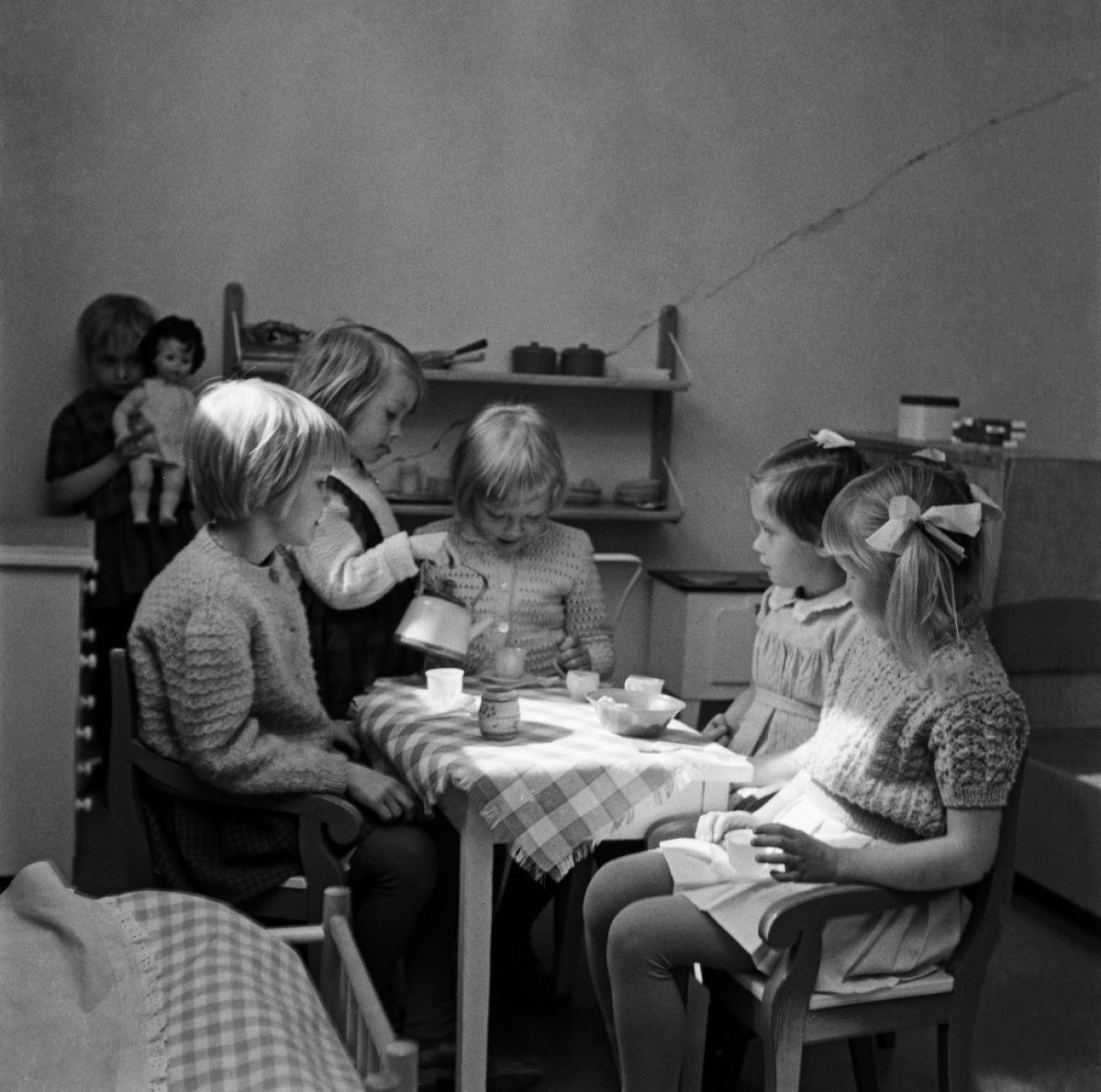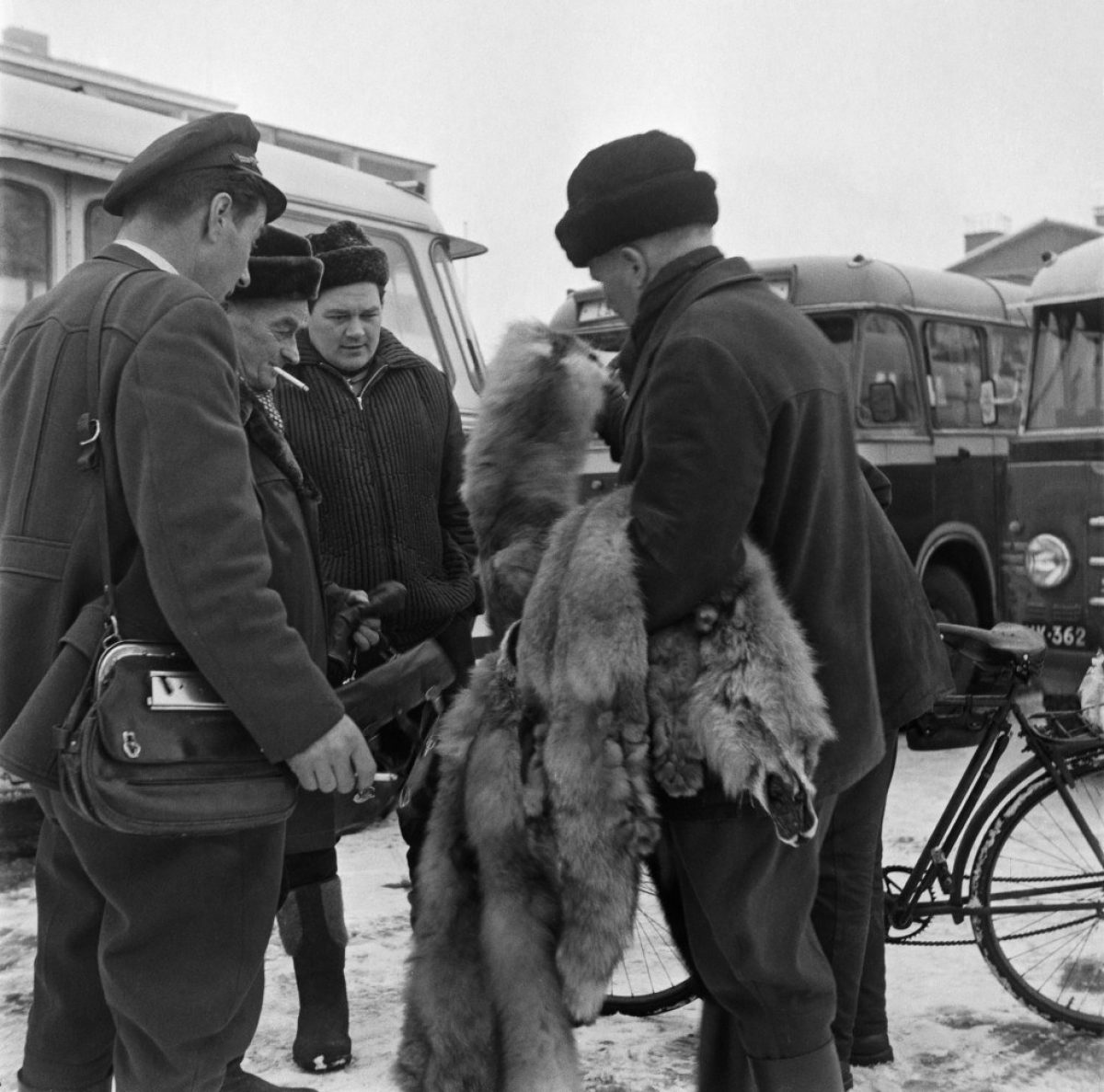
The unknown photographer
Local newspapers tell the stories of our everyday lives.
Leafing through issues of Borgåbladet, the local newspaper for the southern Finnish town of Porvoo, what strikes me is that the majority of column inches is not dedicated to big national news, to leading political or business figures or even to celebrities. What I see are reports of local events, snapshots of everyday small-town life.
A photograph, dated March 1965, has captured a group of young conscripts enjoying a break. The relaxed scene shows one of them mid-cigarette, while another has his arm casually draped around a young woman. A report notes that the Uusimaa Jaeger Battalion have departed their base in Santahamina to go on manoeuvres. According to the listings, a tea dance will be held at the Magnusborg community hall with a programme promising waltzes, tango, foxtrot, cha-cha-cha and classic Finnish jenkka.
Five little girls have organised a party. One of them is “being mother”, pouring tea. Only a sixth girls has not been invited. She stands in the corner, tightly clutching her dolly as she watches the others. The photograph not only captures a moment of play but also reveals the social dynamics between a group of children at Nikkilä nursery in Sipoo in May 1965.
On a sunny day in July 1969, two men are shown relaxing on a jetty, as water laps against the hull of a wooden boat nearby. The photograph perfectly captures a laidback summer mood. But, on closer inspection, it turns out that the peaceful scene is marred by tragedy. A light aircraft has plummeted into the sea. The accident has drawn a crowd of curious onlookers, and many have set off in their boats for the crash site.
At Porvoo market, a man can be seen clutching a bunch of fox tails under his arm. In February 1965, you could get FIM 7–8 for a fox pelt, FIM 3–4 for a ferret, FIM 4 for a muskrat, FIM 20–30 for a mink and FIM 2 for a cat. The cheapest, at just 1 mark, was a rabbit pelt. Trade is brisk. A bus driver is carrying a traditional conductor’s bag. Lots of cigarettes are being smoked.
Through a thick, grey fog, you can just about make out a group of young people. A young man purses his lips, exhaling a lungful of smoke. Whorls of smoke drift from the mouths his companions. The ashtray is full, the smoke gets in your eyes. It’s strange to think now that back in 1970, the students at Porvoo’s Svenska folkakademin college still had a dedicated smoking room set aside for them.
But who captured all these moments? Longer Borgåbladet articles tend to be accompanied by a byline crediting the journalist, but the photographer’s name is nowhere to be seen. In fact, in the 1950s, it was rare for photographers’ names to appear in newspapers. The exception was Osvald Hedenström, who managed to negotiate for his nickname, Hede, to appear with his photos in the Finnish daily Helsingin Sanomat.
The inaugural issue of Borgåbladet appeared on 15 December 1860. In 2014, it merged with Östra Nyland, another Swedish-language paper based in the nearby town of Loviisa. Together, they became Östnyland, published by KSF Media. In 2021, Östnyland’s image bank was gifted to the JOKA press photo archive. The oldest materials in the collection comprise Borgåbladet negatives and prints from 1964 to 2004. None of them are credited.
Completely by chance, I come across a Borgåbladet article dated 8 March 1969 that charts everything that happens before the local paper appears on the subscribers’ doormats four mornings a week. “BBL’s resident snapper Leif Wikström is always on the go,” the text notes. On this occasion, even the photographer’s face appears in print.
With a bit of luck, we manage to get Borgåbladet’s photographer on the phone. During the conversation, we’re able to pin down which photographs are by him and which were taken by a colleague. “I started as Borgåbladet’s sports editor and photographer on 16 September 1964. Ever since I was little, I’d been really into sports and photography. So this was an excellent set up for me,” Wikström explains. In the mid-1970s Wikström was promoted to a generalist editor. He retired in 1998.
For more Borgåbladet
photographs, visit Finna’s Östnyland collection at https://museovirasto.finna.fi/joka.
Text: Raija Linna
Kamera 4/2023

Nikkilä Day Nursery. Borgåbladet, 22 May 1965. Photo: Birgit Lindroos / Östnyland Borgåbladet / Press Photo Archive JOKA / Finnish Heritage Agency.

Fur trading in Porvoo. Borgåbladet, 15 February 1965. Photo: Leif Wickström / Östnyland Borgåbladet / Press Photo Archive JOKA / Finnish Heritage Agency.